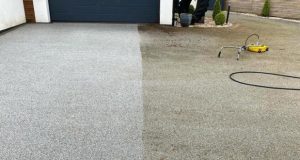The cleaning industry is experiencing increasing competition on a global scale. The commoditisation of products is giving customers more choice and purchasing power. As profit margins decline, businesses that rely on traditional sales tactics, such as discounting and cold-calling, are battling to keep up
The pressure is on for cleaning equipment manufacturers to innovate and adjust their approach to sales – with a focus on adding more value to customer relationships. Focusing on service, as well as sales, is key to boosting loyalty among existing customers and to attract new business. Thanks to improvements in technology, logistics and communications, this is becoming easier – so the pressure is on for equipment companies to take advantage before their competitors.
What is servitisation?
‘Servitisation’ is a term that has been floating around the tools and equipment industry for several decades now, but has only in the last few years become a serious topic of conversation. It refers to the method of increasing a product’s value by bundling it with additional services. While a number of progressive business leaders across various industries have already put this tactic to good use, it’s a relatively unknown to most. However, it’s now starting to gain more interest and thus, become more important – regardless of sector.
Why? Because the modern consumer looks for more than just a product these days – they want a long-term brand experience. This has been made possible thanks to the rise of the internet, mobile and social media. With so many more touchpoints now available for companies to engage with their customers, building a brand experience is not simply mandatory, it’s absolutely essential.
For cleaning companies, servitisation – as well as new technologies and customer touchpoints – provide them with an opportunity to stand out in a saturated market. Let’s take a closer look at what that means and how your business can build servitisation into its sales strategy with success.
Differentiate with value-add services
The entry of large online merchandisers like Amazon into the cleaning supplies and equipment industry has made it harder for smaller companies to differentiate their offer based on their products alone. In response, many cleaning companies are undercutting their products in a desperate attempt to beat the competition on price. This sort of price war is impossible to win – in fact, all it ends up doing is damaging the entire industry.
Servitisation means going beyond simply selling a product and providing customers with value-add services. It’s no longer about moving stock at whatever price: it’s about accompanying the stock with services that speak to the customer’s needs and makes for a more compelling sale. This way, your brand retains its value and your customers feel seen and heard.
Providing value-add services is a way to stand out in the crowd. So, if you’re trying to push a bulk sale on high-pressure cleaners, what can you add to the sale to make it more worthwhile to your prospective buyer? Typical value-adds include services like equipment maintenance and operator training. However, the unfortunate reality is that these too are now becoming a dime a dozen.
Innovation through technology
One of the biggest challenges facing cleaning companies is not simply introducing servitisation into their sales strategy – it’s keeping their tactics fresh. To really benefit from servitisation, you need to think innovatively and introduce new services on a regular basis. If you can keep your rivals guessing, you know you’re onto a good thing!
Technology is key to innovation. The right software and tools can improve product development, go-to-market timelines, supplier networks and distribution. Ultimately, customers want what they want, and they want it fast. So, the better able you are at optimising product delivery and providing a solid customer service along the entire buying journey, the more satisfied customers you’ll have.
Satisfied customers make for repeat business – and they spread the word. Knocking both retention and acquisition on the head at once is an efficient way to do business. Of course, to keep customers happy, you first need to know what they want and need.
Know your customers
Information about your customers is vital – although reams of data on its own is not particularly helpful. But with the right analysis, it can help you track their buying behaviour and stay tuned into their needs. How you gather, store and use your customer information is essential to servitisation. It enables you to provide not just any service, but the right service at the right time.
If, for example, your customer’s business is seasonal and requires a bulk order of a certain type of mop at a certain time, you can pre-empt their needs. A subscription model enables you to replenish their stock proactively so that their needs are always met on time. Your customer doesn’t even need to think about placing an order; with a repeat order program in place, the mops simply arrive as pre-planned.
 Not only do these tactics help you sell your products, they help you sell your brand. Your entire business becomes less about the products themselves, and more about the relationships you have with your customers. To successfully incorporate servitisation into your sales strategy, suppliers within the cleaning industry need to apply new technologies to Sales 101. In other words, keep your customers front and centre, and use your data to serve them better.
Not only do these tactics help you sell your products, they help you sell your brand. Your entire business becomes less about the products themselves, and more about the relationships you have with your customers. To successfully incorporate servitisation into your sales strategy, suppliers within the cleaning industry need to apply new technologies to Sales 101. In other words, keep your customers front and centre, and use your data to serve them better.
By Paul Black, CEO at sales-i.





